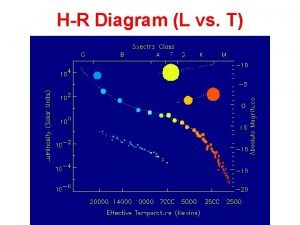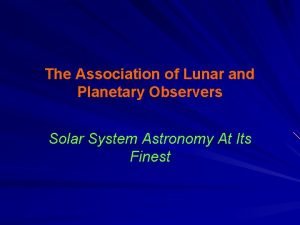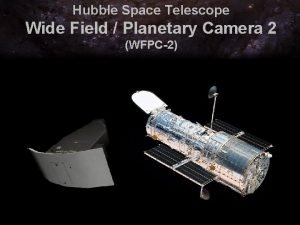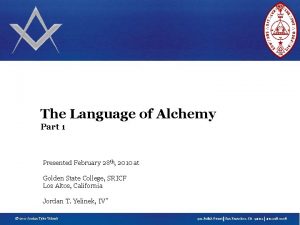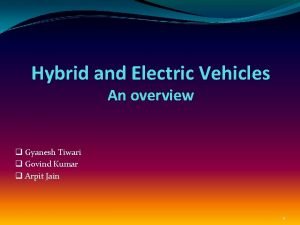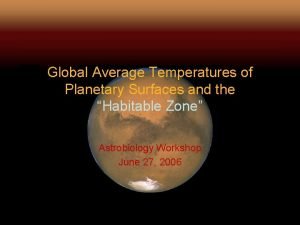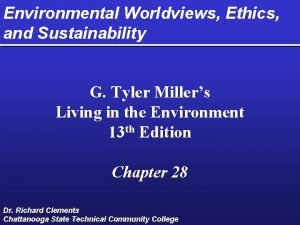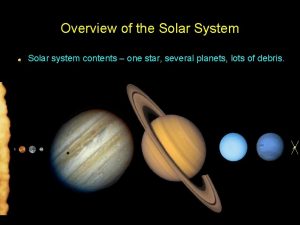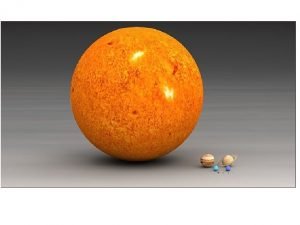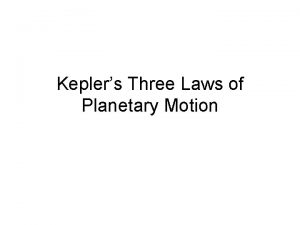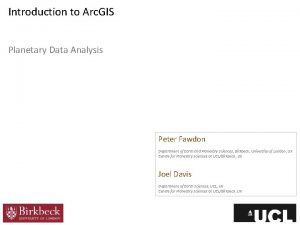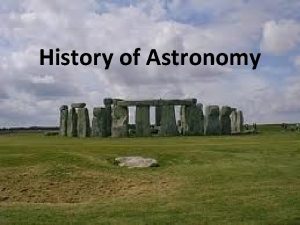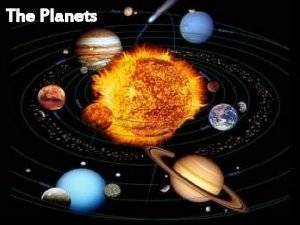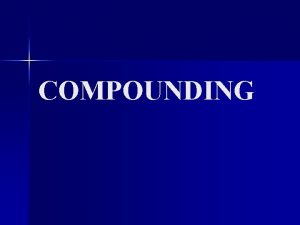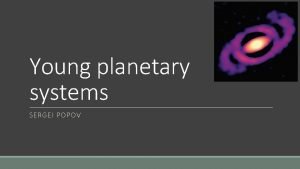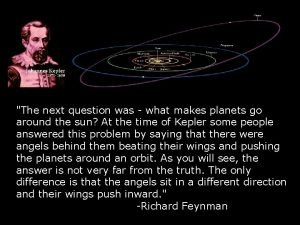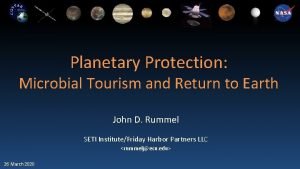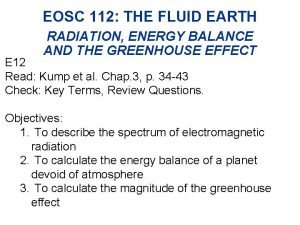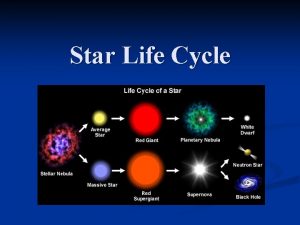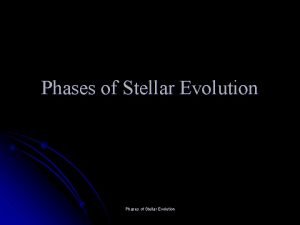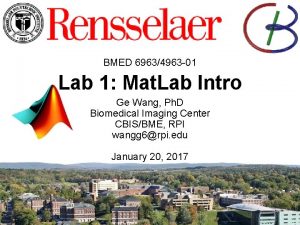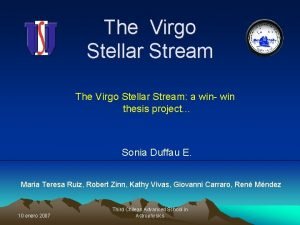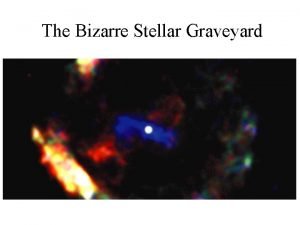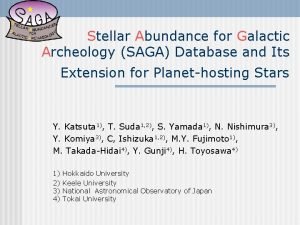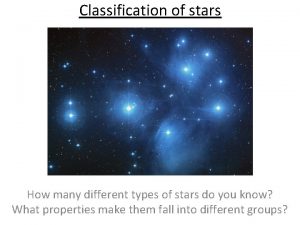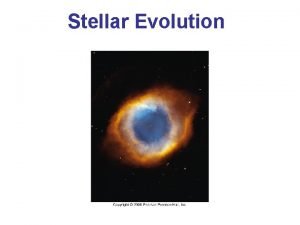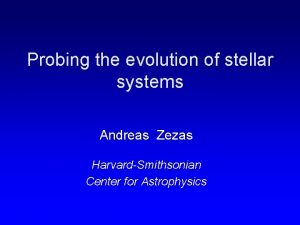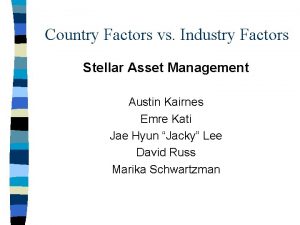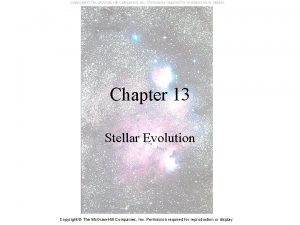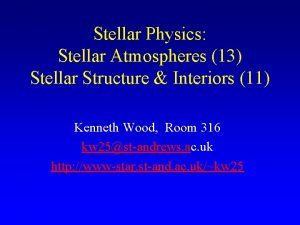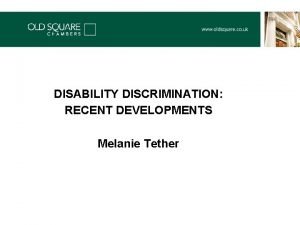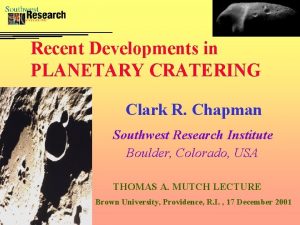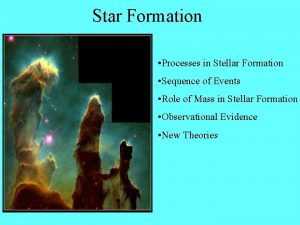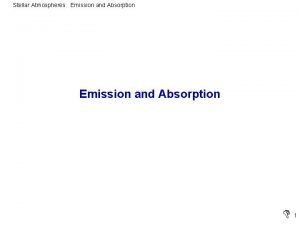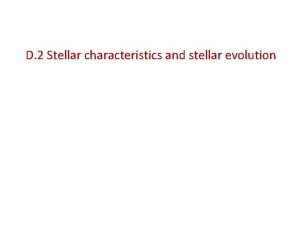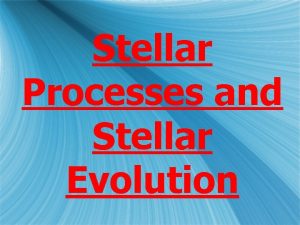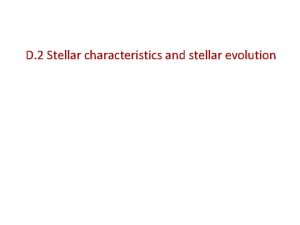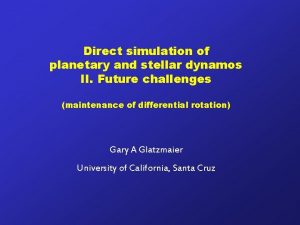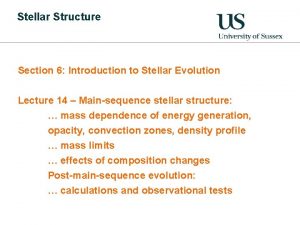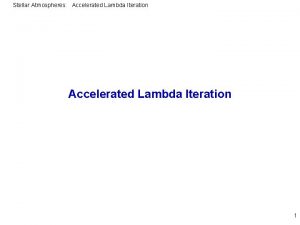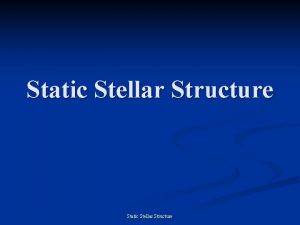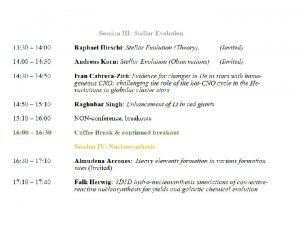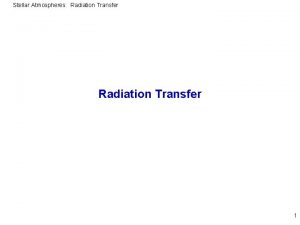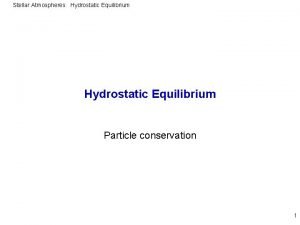Recent Developments in Stellar and Planetary System Formation






![HH 46/47 Ha, [SII], [OII] HH 46/47 Ha, [SII], [OII]](https://slidetodoc.com/presentation_image/00958af8340ccf6ddda97f665435ee75/image-7.jpg)




































- Slides: 43

Recent Developments in Stellar and Planetary System Formation John Bally Center for Astrophysics and Space Astronomy Department of Astrophysical and Planetary Sciences University of Colorado, Boulder

Introduction • Star Formation: The fundamental cosmic (baryonic) process Determines cosmic fate of normal matter Galaxy formation, evolution, IMF Star Formation Elements (He => U) Conditions for life Planet formation Clusters Light, K. E. of ISM black holes (AGN, stellar)

Star Formation Shrink size by 107; increase density by x 1021 ! Where planets also form • Giant Molecular Cloud Core Raw material for star birth • Gravitational Collapse & Fragmentation Proto-stars, proto-binaries, proto-clusters • Rotation & Magnetic Fields Accretion disks, jets, & outflows • Planets Most may form in clusters! C. Lada

Star-Formation: • SF occurs in Giant Molecular Clouds (GMCs): Decay of turbulence + • Gravity + W + B Collapse => disks, jets => stars, planets • Fragmentation: Non-hierachical multiples: disintegration Dense (mostly unbound) clusters: < n*> ~ 103 - 105 pc -3 • 90% of stars born in OB associations: Multiple SN Galactic 'ecology' OB *s Superbubbles => GMCs 20 - 50 Myr superbubbles inject short-lived isotopes gravity Supershells / rings

NGC 1333 IC 348 IRAS 03235+3004

M. Bate
![HH 4647 Ha SII OII HH 46/47 Ha, [SII], [OII]](https://slidetodoc.com/presentation_image/00958af8340ccf6ddda97f665435ee75/image-7.jpg)
HH 46/47 Ha, [SII], [OII]

Spitzer IRAC

HH 46/47 HST 1997 - 1994

HH 46/47 HST 1997 - 1994

Irradiated jets in h Car (Tr 14)


The Orion Star Forming Complex Wei-Hao Wang


Infrared view of winter sky (10 - 120 mm)

The Orion/Eridanus Bubble (Ha): d=180 to 500 pc; l > 300 pc Orion OB 1 Association: ~40 > 8 M stars: ~20 SN in 10 Myr l Ori (< 3 Myr) 1 a (8 - 12 Myr; d ~ 350 pc)) 1 b (3 -6 Myr; d ~ 420 pc) 1 c (2 - 6 Myr; d ~ 420 pc) 1 d (<2 Myr; d ~ 460 pc) Barnards's Loop Eridanus Loop

Orion Molecular Clouds Orion B 13 CO Orion Nebula Orion A 2. 6 mm

20


Orion below the Belt: NGC 2024 (OB 1 d) Horsehead Nebula s Orionis (OB 1 c) NGC 1981 Ori OB 1 c NGC 1977 Orion Nebula Ori OB 1 d i Ori NGC 1980: Source of m Col + AE Aur ; V ~ 150 km/s runaways, 2. 6 Myr ago


Orion Nebula Trapezium (L = 105 Lo t < 105 yr ) OMC 1 Outflow (H 2 t = 3, 000 yr) BNKL (L = 105 Lo t << 105 yr) OMC 1 -S (L = 104 Lo , t < 105 yr)


Trapezium cluster Proper motions: Van Altena et al. 88 2. 6 1. 8 Vesc ~ 6 km s-1 2. 5 5

Orion BN/KL H 2 NICFPS APO 3. 5 m First light 21 Nov 04



0. 5 – 2. 2 mm 104 AU

11. 7 mm 104 AU Gemini S TRe. CS

OMC 1 H 2 fingers

High-velocity stars: I , BN , n (Gomez et al. 2005) BN: V~ 30 km s-1 I: ~ 13 km s-1 n: ~ 20 km s-1

UV photo-ablation of disks & planet formation: d 253 -535 in M 43

Orion Nebula: Disks seen in silhouette

HST 16 HST 10 HST 17 Irradiated proto-planetary disks:

Anatomy of a planetary system forming in an OB association

Disk mass-loss: UV Radiation => heatimg = > Mass – loss t ~ 1 Myr r > GM / c 2 ~ 40 AU for Soft UV (91 < l < 200 nm) ~ 5 AU for ionizing UV ( l < 91 nm) (for Solar mass) Self-irradiation by central star vs. External irradiation by nearby massive star: Lself(UV) / 4 p d*2 = Lexternal(UV) / 4 p d. OB 2 Lexternal(UV) ~ 1049 photons / sec Lself(UV) ~ 1040 - 1043 photons / sec

Impacts of the environment: Life of a massive star ~ 3 to 40 Myr ~ planet formation time-scale • Clustering, multiplicity: - Close-encounters - Truncate, shock-heat disks • UV radiation: - External + Self => Mass-lost in ~ few Myr UV dose: 1042 – 1045 Main-sequence star Blue-supergiant Supernova Dt (g sec-1) (3 – 30 Myr) (< 106 years) (1 year) • Massive star winds, Supernovae: - Inject short-lived isotopes: 26 Al, 60 Fe

UV => Fast Growth of Planetesimals: Grain growth => Solids settle to mid-plane UV => Remove dust depleted gas => High metallicity in mid-plane Gravity => Instability => 1 - 100 km planetesimals - Fast Formation of 1 to 100 km planetesimals

Growing grains: Orion 114 -426 (Throop et al. 2001)


Supernovae: Oldest meteorites: (CAIs: 4, 567. 6 Myr old = 0 ) Chondrules: +2 to 4 Myr 26 Al => 26 Mg (t 1/2 ~ 0. 7 Myr) 60 Fe => stable elements (t 1/2 ~ 1. 5 Myr) => Solar System formed in Orion-like OB association SN within few pc, few Myr of forming Solar System

Conclusions • Most stars form in Orion-like regions - Sibling star interactions - Jets => halt star formation • Proto-planetary disks processed by UV - Gas lost in few x 106 years - Grain growth + sedimantation + UV => Prompt planetesimal formation • Massive Stars: - Mutual interactions => high velocity stars (BN) => explosive outflows - HII regions => halt star formation - Supernavae: => Inject 60 Fe, 26 Al, …

The End
 Recent developments in ict
Recent developments in ict Recent developments in object detection
Recent developments in object detection Stellar formation
Stellar formation Association of lunar and planetary observers
Association of lunar and planetary observers Wide field and planetary camera 2
Wide field and planetary camera 2 Alchemical language
Alchemical language Prius planetary gear animation
Prius planetary gear animation Planetary temperature calculator
Planetary temperature calculator Environmental wisdom worldview
Environmental wisdom worldview Solar system contents
Solar system contents Planetary systems
Planetary systems Planetary positions today
Planetary positions today 3 laws of planetary motion
3 laws of planetary motion Planetary data analysis
Planetary data analysis Stonehenge planetary orbits
Stonehenge planetary orbits What factor causes global wind patterns
What factor causes global wind patterns Stewardship worldview definition
Stewardship worldview definition Law of planetary motion
Law of planetary motion Planetary mixer definition
Planetary mixer definition Environmental wisdom worldview
Environmental wisdom worldview Planetary model
Planetary model Brown dwarf
Brown dwarf Kepler law formula
Kepler law formula Planetary protection
Planetary protection Nasa planetary science
Nasa planetary science Kepler's law of planetary motion
Kepler's law of planetary motion Eosc 112
Eosc 112 Formation initiale vs formation continue
Formation initiale vs formation continue Stellar heaven
Stellar heaven Stellar flux
Stellar flux Stellar evolution diagram
Stellar evolution diagram Zero age main sequence
Zero age main sequence Stellar motion matlab
Stellar motion matlab Virgo stellar stream
Virgo stellar stream Stellar graveyard
Stellar graveyard Star life cycle 1-10
Star life cycle 1-10 Stellar hosting iptv
Stellar hosting iptv Stellar assessment
Stellar assessment Stellar saga
Stellar saga What is stellar parallax?
What is stellar parallax? Stellar evolution
Stellar evolution Stellar
Stellar Stellar asset management
Stellar asset management Stellar evolution
Stellar evolution


